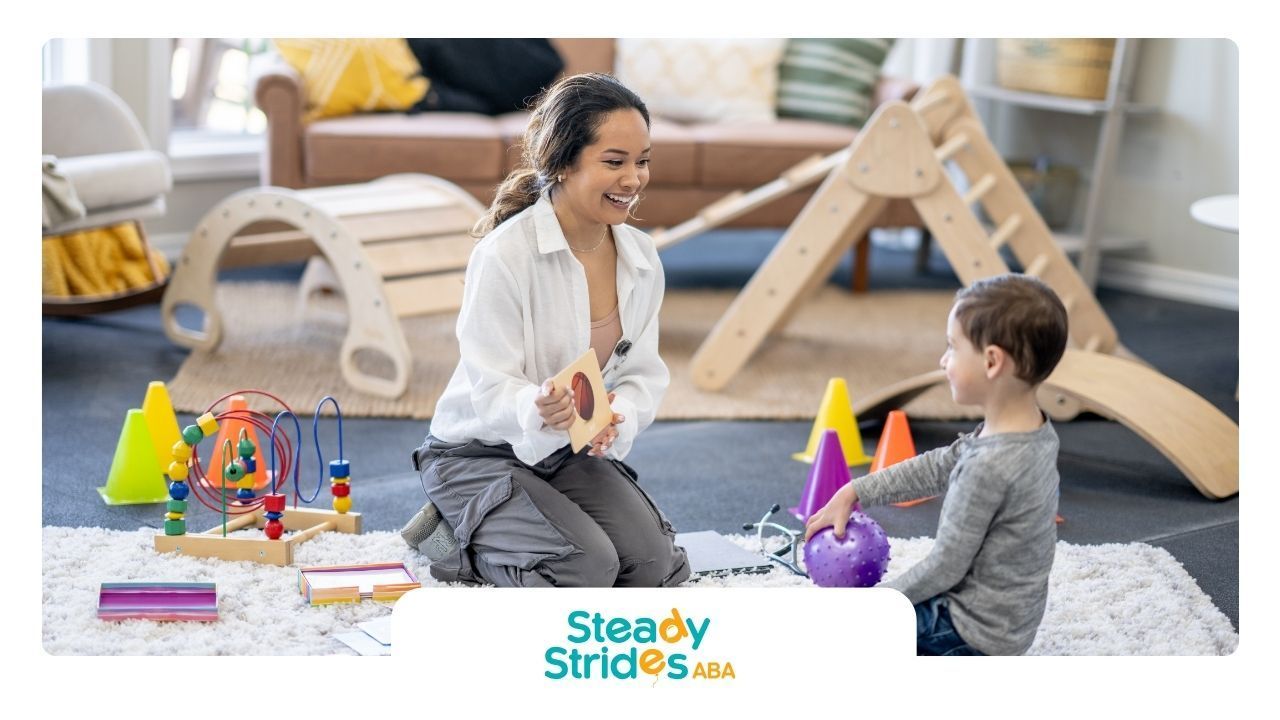Understanding Autistic Masking
Definition of Masking
Autistic masking refers to the conscious or subconscious effort by autistic individuals to hide or suppress their natural autistic traits and behaviors to conform to societal norms or avoid negative judgment from others. This can lead to increased stress, anxiety, and exhaustion, as well as a loss of identity or feeling 'lost' between their true self and the persona they project.
Autistic masking can include the following behaviors:
- Mimicking neurotypical actions
- Suppressing self-stimulatory behaviors (stimming)
- Forcing themselves to maintain eye contact during conversations
The goal of these behaviors is often to blend in, navigate social situations, and avoid the stigma associated with autism. However, the long-term effects can lead to significant mental health issues, including increased stress, anxiety, and burnout. For more on the signs of masking, visit
signs of autistic masking.
| Behavior | Description |
|---|---|
| Mimicking Neurotypical Actions | Replicating typical social cues |
| Suppressing Stimming | Avoiding natural self-soothing behaviors |
| Maintaining Eye Contact | Forcing sustained eye contact in social interactions |
Gender Disparities in Masking
Gender disparities in autistic masking are significant. Factors that may indicate the likelihood of masking are varied and include gender, ethnicity, cultural background, and co-occurring learning disabilities.
Research has shown that women and girls are more likely to engage in masking compared to men and boys. This is partly because social expectations often put more pressure on females to conform to societal norms. As a result, females on the autism spectrum may go undiagnosed for a longer time because their efforts to mask their symptoms make their autism less apparent.
To further explore how autistic masking affects one's identity and mental health, and to better understand how to stop masking, visit
how to stop autistic masking.
| Gender | Likelihood of Masking |
|---|---|
| Female | Higher |
| Male | Lower |
Understanding these gender disparities can help in creating more supportive environments that recognize the unique experiences and challenges faced by all individuals on the autism spectrum. Recognizing the effects of masking is crucial for providing appropriate support and reducing the need for masking altogether.
Impacts of Autistic Masking
Autistic masking has significant impacts on individuals, often affecting both their mental health and social functioning. This section explores these critical effects.
Mental Health Effects
Autistic masking can have profound consequences on the mental well-being of individuals who engage in it. Masking involves suppressing one's natural behaviors and characteristics to fit societal norms. This constant effort to conceal traits can lead to several mental health problems.
| Mental Health Effect | Description |
|---|---|
| Anxiety | Increased levels of anxiety due to the constant need to monitor and adjust behavior. |
| Depression | Feelings of sadness and hopelessness resulting from the internal stress and exhaustion of maintaining a facade. |
| Exhaustion | Physical and emotional exhaustion from the continuous effort to conform. |
| Autistic Burnout | A state of extreme fatigue, loss of skills, and reduced tolerance to sensory input due to prolonged masking. |
These mental health issues not only reduce the quality of life but also exacerbate the challenges faced in day-to-day activities, potentially leading to more severe conditions over time.
Social Functioning Challenges
Masking also creates several difficulties related to social interactions and functioning. The primary goal of masking is usually to navigate social situations more easily. However, it often leads to unintended negative outcomes.
| Social Challenge | Description |
|---|---|
| Isolation | Feelings of being disconnected from others because they are not interacting as their authentic self. |
| Relationship Strain | Difficulty forming and maintaining relationships due to emotional exhaustion and challenges in being genuine. |
| Reduced Authenticity | The effort to hide autistic traits can make social interactions feel inauthentic, leading to a decreased sense of belonging. |
Due to these issues, individuals who mask frequently encounter relationship struggles and may experience significant emotional distress.
Continual masking can erode one's sense of identity and contribute to a vicious cycle of social and mental health challenges. It's crucial to be aware of these impacts and seek strategies to mitigate them, such as using recovery and coping methods or seeking support and acceptance.
For more information on what masking involves, visit our page on the definition of masking.
Factors Influencing Masking
Understanding the factors that contribute to autistic masking in adults can provide valuable insights into the behavior and strategies used by individuals on the autism spectrum. Two significant factors influencing masking are education and social behavior, as well as the severity of autism and camouflaging abilities.
Education and Social Behavior
Education and social behavior play a crucial role in autistic masking. Camouflaging behavior has been positively associated with higher levels of education, particularly university education. Individuals who pursue higher education often find themselves in diverse social environments where social norms and expectations can be complex. To navigate these settings, autistic individuals may feel compelled to mask their autistic traits.
Additionally, higher vocal expression and active involvement in social activities also contribute to increased camouflaging behaviors among autistic individuals. Engaging in social interactions often requires adapting to societal expectations, which can lead to masking. Here is a summary of the relationship between education, social behavior, and masking:
| Factor | Influence on Masking |
|---|---|
| University Education | Increased likelihood of camouflaging |
| Higher Vocal Expression | Increased camouflaging behavior |
| Social Involvement | Higher tendency to mask |
Autism Severity and Camouflaging
The severity of autism also influences the extent of camouflaging in adults. Camouflaging, or the ability to mask autistic traits, varies widely among individuals on the autism spectrum. Those with milder forms of autism may find it easier to camouflage their traits compared to individuals with more pronounced symptoms.
Additionally, gender differences have been noted in masking behaviors. Studies indicate that camouflaging is more common in autistic females than males. This difference could be attributed to societal expectations and pressures that differ between genders. Moreover, the reasons for camouflaging often differ, with women more likely to camouflage to fit in socially, while men may do so to avoid negative attention.
| Factor | Prevalence of Camouflaging |
|---|---|
| Milder Autism Severity | More likely to camouflage |
| Severe Autism | Less likely to camouflage |
| Gender (Females) | More prevalent in camouflaging |
| Gender (Males) | Less prevalent in camouflaging |
Autistic individuals often describe masking as a survival mechanism in a world that may not fully understand or accept their differences. However, many individuals report that receiving a diagnosis reduced the need to camouflage, as they felt more accepted.
Coping Strategies for Masking
Coping with the challenges of autistic masking in adults requires both recovery methods and the support of a nurturing environment. Below are some effective strategies.
Recovery and Coping Methods
For many, understanding and addressing the mental and emotional strain caused by masking is key. Here are some recovery methods:
- Self-Acceptance and Self-Care: Encouraging self-acceptance helps in reducing the stress associated with maintaining a facade. Self-care routines, including regular breaks and engaging in calming activities, can be beneficial.
- Mindfulness and Relaxation Techniques: Practices like meditation, deep breathing exercises, and yoga can help in managing anxiety and stress associated with masking.
- Creative Outlets: Engaging in creative activities such as art, music, or writing allows expressions of individuality, serving as an emotional release.
- Setting Boundaries: Establishing personal boundaries to avoid situations that necessitate intense masking can help in conserving emotional energy.
Seeking Support and Acceptance
Support and acceptance, both from the autistic community and the broader society, play a crucial role in managing masking. According to PubMed Central, many individuals experience less need to camouflage after receiving a diagnosis, as it fosters a sense of acceptance.
- Support Groups: Joining groups where one can share experiences with others in similar situations can be comforting and validating.
- Professional Help: Therapy, particularly cognitive behavioral therapy (CBT) and acceptance commitment therapy (ACT), can help in addressing underlying anxiety and stress caused by masking.
- Autistic Advocacy: Engaging with advocacy groups focusing on autism awareness and acceptance can support social changes that reduce the need for masking.
- Education: Educators and family members should be educated about masking, creating environments where autistic individuals feel safe to be themselves.
Ultimately, understanding and supporting the needs of autistic individuals in both home and professional settings can significantly reduce the pressure to mask and support overall well-being.
Long-Term Consequences of Masking
Effects on Identity and Mental Health
Autistic masking involves individuals with Autism Spectrum Disorder (ASD) adopting behaviors to fit into neurotypical environments. Over time, this can have serious ramifications on their identity and mental health. Prolonged masking may lead to autistic burnout characterized by exhaustion, anxiety, and depression. The constant need to suppress natural behaviors and mimic neurotypical norms can result in a loss of self-identity and feelings of failure:
- Stress: Continuous masking heightens stress levels as individuals strive to meet unrealistic expectations.
- Anxiety: The persistent worry about social acceptance creates anxiety.
- Depression: The feeling of not being authentic or true to oneself fosters depressive symptoms.
- Emotional Exhaustion: Consistent masking depletes emotional reserves, leading to burnout.
Relationship Struggles and Burnout
Masking also affects social interactions and relationships. The effort to appear neurotypical can limit emotional availability, complicating authentic connections with others. The long-term implication is often a struggle in forming and maintaining relationships, leading to isolation and loneliness:
- Isolation: The inability to engage authentically results in feelings of isolation.
- Relationship Strain: Emotional unavailability can lead to strained personal relationships.
- Loneliness: Masking inhibits genuine social interactions, contributing to loneliness.
Autistic masking in adults creates challenges that extend beyond mental health to affect daily interactions and overall well-being. It underscores the importance of promoting societal acceptance and understanding of neurodiversity to reduce the need for masking behaviors.
Promoting Awareness and Acceptance
Embracing Neurodiversity
Embracing neurodiversity is crucial in acknowledging and valuing the different ways in which autistic individuals experience the world. Autistic masking often arises from the need to blend into a society that values neurotypical behavior over neurodivergent expression. By fostering an environment that celebrates diverse neurological conditions, we can reduce the pressure on autistic individuals to suppress their natural traits.
Neurodiversity emphasizes the importance of accepting each person's unique neurological makeup. Understanding that variations in thinking, behavior, and social interaction are natural parts of human diversity can help to reduce stigma and discrimination. Advocacy and education play key roles in promoting neurodiversity. Educators, employers, and communities must be informed about the strengths and challenges associated with autism spectrum disorder (ASD). Spreading awareness about the identity and capabilities of autistic individuals supports a more inclusive society.
Reducing the Need for Masking
Reducing the need for autistic masking involves creating environments where autistic individuals feel safe and accepted. Masking, often a response to social pressures, is an exhausting and harmful effort to meet societal expectations. To mitigate this, practices and policies that promote acceptance and understanding must be put in place.
The need for masking can be reduced by providing environments that respect and accommodate autistic individuals' needs. Schools, workplaces, and social settings should offer:
- Sensory-friendly spaces: Environments with reduced sensory input can help autistic individuals feel more comfortable.
- Flexible social norms: Allowing for different types of social interactions without judgment.
- Support networks: Access to mental health resources and peer support groups.
Acceptance and understanding within these settings help minimize the societal pressures that lead to masking.
Below is a table showcasing environments where reducing the need for masking is essential:
| Environment | Key Approaches |
|---|---|
| Schools | Sensory-friendly classrooms, supportive educators, peer education programs |
| Workplaces | Flexible working conditions, sensory accommodations, diversity training for staff |
| Social Settings | Inclusive community activities, accessible events, public awareness campaigns |
By implementing these approaches, opportunities for autistic individuals to express their authentic selves can significantly increase. Reducing the pressure to conform to neurotypical standards, society can support the mental health and well-being of autistic individuals.
By promoting awareness, embracing neurodiversity, and reducing the need for masking, society can foster an inclusive environment where autistic individuals are valued and supported.
SOURCES:
https://pmc.ncbi.nlm.nih.gov/articles/PMC10060524/
https://pmc.ncbi.nlm.nih.gov/articles/PMC8992917/
https://www.autism.org.uk/advice-and-guidance/topics/behaviour/masking
https://nurselinecs.co.uk/autism/autistic-masking-symptoms/
https://www.thirdspace.scot/wp-content/uploads/2022/09/NAIT-Guide-to-Autistic-Masking-for-Parents-and-Carers-2022.pdf













